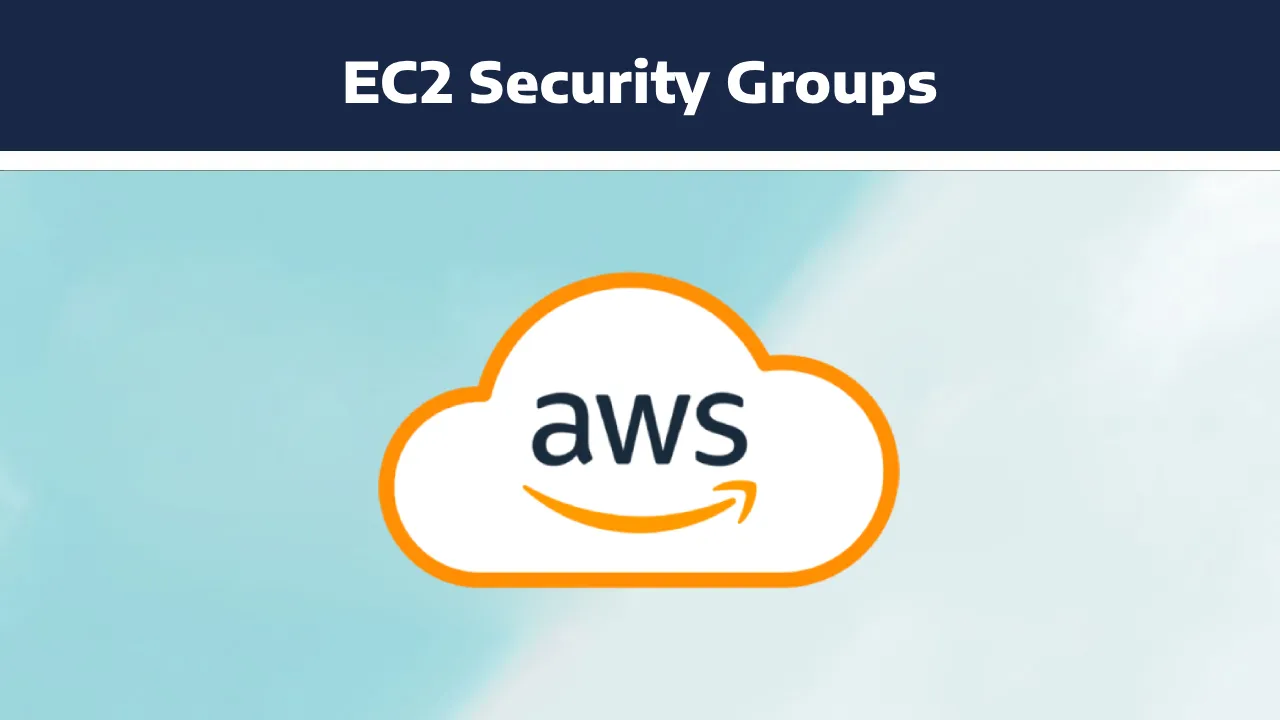In-Depth Guide to EC2 Security Groups in AWS
Amazon Elastic Compute Cloud (EC2) Security Groups are a fundamental component of AWS's security model, providing a way to control inbound and outbound traffic to EC2 instances. Security Groups act as virtual firewalls, allowing users to define rules that govern the communication flow to and from instances. In this comprehensive guide, we will explore the intricacies of EC2 Security Groups, including their features, best practices, and practical implementation.
1. Introduction to EC2 Security Groups
1.1 Definition and Purpose
EC2 Security Groups are virtual stateful firewalls that control inbound and outbound traffic for EC2 instances. They act as a first line of defense, determining which traffic is allowed or denied based on user-defined rules.
1.2 Stateful Nature
Security Groups are stateful, meaning that if you allow inbound traffic from a specific IP address, the corresponding outbound traffic is automatically allowed. This simplifies the rule configuration process.
1.3 Instance Level Protection
Each EC2 instance is associated with one or more Security Groups. When an instance receives traffic, the rules of its associated Security Groups are evaluated to determine whether the traffic is allowed.
2. Key Features of EC2 Security Groups
2.1 Rule-Based Configuration
Security Groups operate based on rules defined by users. These rules specify the allowed traffic by defining the source, destination, and port range.
2.2 Dynamic Updates
Changes to Security Group rules take effect immediately. This dynamic nature allows for quick adjustments to the traffic flow without requiring instance restarts.
2.3 Default Deny All
By default, Security Groups follow a "deny all" principle. Only explicitly defined rules are allowed, ensuring a secure default configuration for instances.
3. Inbound and Outbound Rules
3.1 Inbound Rules
Inbound rules control the incoming traffic to an EC2 instance. Users can define rules based on the source IP address, port range, and protocol (e.g., TCP, UDP, ICMP).
3.2 Outbound Rules
Outbound rules, on the other hand, govern the outgoing traffic from an EC2 instance. Users can specify the destination IP address, port range, and protocol for outbound traffic.
4. Creating and Managing Security Groups
4.1 Using the AWS Management Console
4.1.1. Navigate to the EC2 Dashboard in the AWS Management Console.
4.1.2. In the left navigation pane, click on "Security Groups."
4.1.3. Click the "Create Security Group" button.
4.1.4. Configure the inbound and outbound rules as needed.
4.1.5. Click "Create Security Group" to save the configuration.
4.2 Using AWS CLI
4.2.1. Use the create-security-group command to create a new Security Group.
4.2.2. Use the authorize-security-group-ingress command to add inbound rules.
4.2.3. Use the authorize-security-group-egress command to add outbound rules.
4.3 Using AWS SDKs
AWS Software Development Kits (SDKs) for various programming languages provide APIs for managing Security Groups programmatically.
5. Best Practices for EC2 Security Groups
5.1 Least Privilege Principle
Follow the principle of least privilege by allowing only necessary traffic. Limit source IP addresses, port ranges, and protocols to the minimum required for functionality.
5.2 Regular Auditing
Regularly audit and review Security Group rules to ensure they align with current application requirements. Remove any unnecessary rules or outdated configurations.
5.3 Use Security Group References
Instead of duplicating rules across multiple Security Groups, reference a common set of rules. This simplifies management and ensures consistency.
5.4 Logging and Monitoring
Enable VPC Flow Logs to capture information about the IP traffic going to and from network interfaces in your VPC. Utilize CloudWatch Logs for centralized logging and monitoring.
6. Common Use Cases
6.1 Web Application Security
Create Security Groups to control traffic to web servers, allowing only necessary ports (e.g., 80 for HTTP, 443 for HTTPS) from specific IP ranges.
6.2 Database Access Control
For databases, define Security Groups that permit traffic only from application servers or specific instances requiring database access.
6.3 Application Load Balancers
Configure Security Groups for instances behind Application Load Balancers, allowing traffic from the load balancer while restricting direct external access.
7. Dynamic Security Group References
Leverage dynamic references in Security Groups for scenarios where instances dynamically change, and their IP addresses are not known in advance.
8. Conclusion
EC2 Security Groups play a crucial role in securing EC2 instances in AWS. By implementing and adhering to best practices, users can create a robust network security posture that aligns with their specific application requirements. Regular monitoring, auditing, and updates to Security Groups ensure that the security policies remain effective and aligned with the evolving needs of the AWS environment. As a fundamental component of AWS's shared responsibility model, Security Groups empower users to establish secure, scalable, and efficient network architectures within the AWS cloud.
